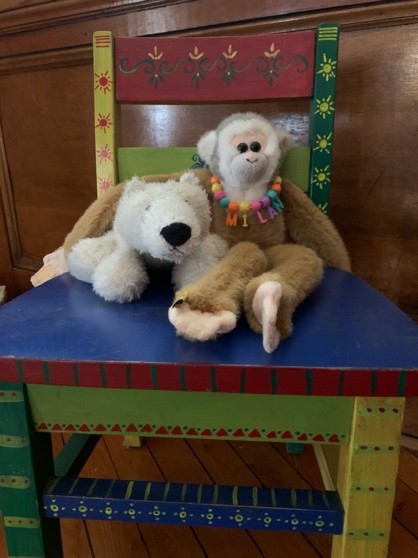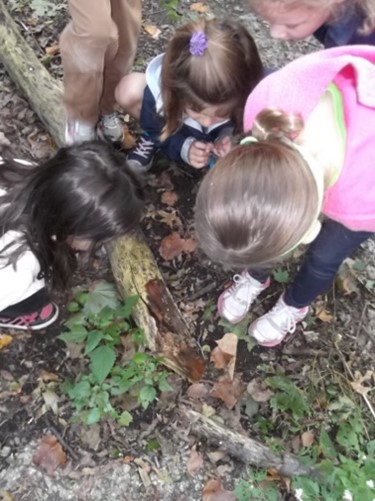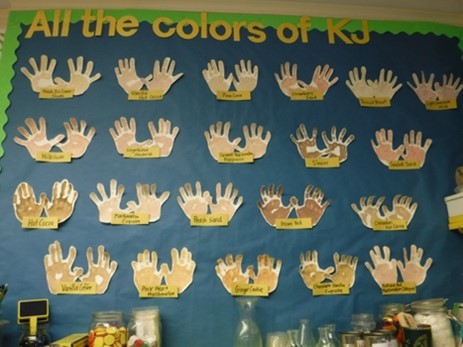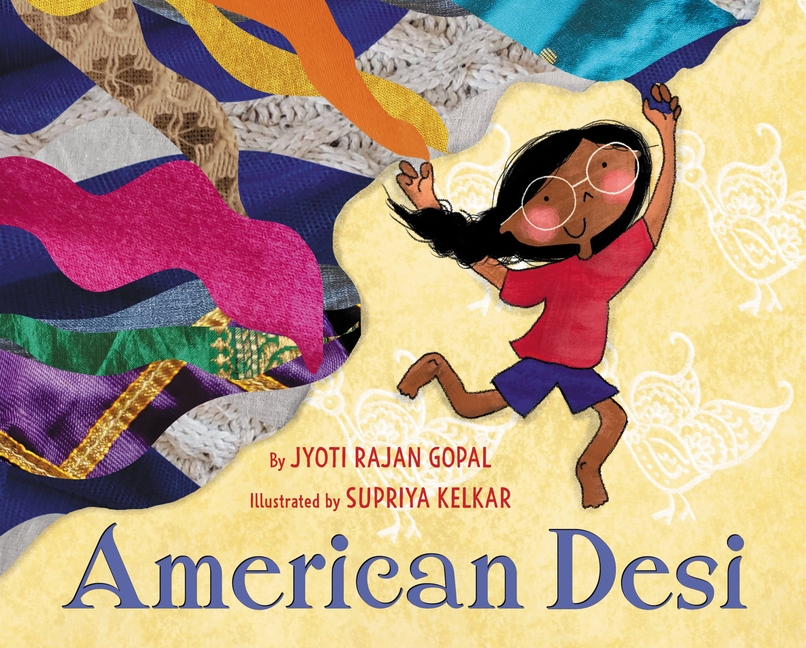From Teaching to Writing

TeachingBooks asks each author or illustrator to reflect on their journey from teaching to writing. Enjoy the following from Jyoti Rajan Gopal.
“Ms. Gopal, Ms. Gopal. William is here. He’s visiting the classroom again” my kindergartners warn me. Our class resident spider has decided to scuttle across the room. Children scoot out of the way, while simultaneously craning their necks to catch a glimpse of our superstar. A few call out “Hello William!” A few hang back in trepidation.
William has a whole back story. I started it off by giving him a name (we’d been reading William Steig books!). Then, I let my students in on the ‘secret’ that he’d been visiting my room for years! They took it from there. William is an adventurous spider, one said. He loves kids, said another. He’s trying to find a place to make a home, said a third.
Our classroom also has two stuffed animals, Milan and Nanuk, available for hugs or a listening ear.

Milan and Nanuk on the classroom Story Chair
They are known for the occasional shenanigans they get up to at night when no one is around. One day, we found a note from them, thanking the class for the books they were making and asking for more stories. My kindergarteners were ecstatic. A couple of them looked at me suspiciously, as if to say “Really? Milan and Nanuk wrote the note?” Their skepticism was swept aside by the excitement of peers, and a new ritual began of writing notes to our class buddies and waiting for their responses.
I share these classroom tales because my students and I spent many happy hours contemplating the secret lives of William, Nanuk and Milan. They provided fodder for many a story, oral and written!
They dive into these stories with every fiber of their being, making meaning and sense of their world and of who they are while doing so.
I also share these stories to highlight that children create stories in so many different ways – yes, they may write and illustrate them on paper – but they also create them in the block area, when building with Legos, in the dramatic play area, while playing outdoors, on a nature walk, and yes, when they join their teacher in weaving tales about a spider, a lemur and a polar bear. They dive into these stories with every fiber of their being, making meaning and sense of their world and of who they are while doing so. I am inspired by their curiosity, their creativity, their enthusiasm, and the way they give their whole selves to the story.

I try to remember this as a writer – to dive into stories with every fiber of my being. Indeed, I’ve discovered that when I try to write something that I do not believe with my whole self, I stumble and fumble and become lost for words – finding my way only when I figure out that missing piece.
I think we are so focused as educators on a curriculum of writing, that we forget that stories are based on lived experiences and emotions, and children must have time to live, play, explore and experience with all their senses.
We grown-ups often try to impose our own ideas about storytelling on children, creating frameworks, and guidelines, and step-by-step processes, instead of helping children discover their own voices, or encouraging them to tell their stories in their own ways. I think we are so focused as educators on a curriculum of writing, that we forget that stories are based on lived experiences and emotions, and children must have time to live, play, explore and experience with all their senses. There’s a time and a place for learning about story structure and mentor texts, and all the other nitty gritty of being a writer. But that time and place is different for different children.
I try to remember this as a writer. I can take all the classes I want, learn the different ways stories are written, study mentor texts and story structure – all important things to do as I work on my craft – but I must learn to honor my writing process and how writing comes to me. And in doing so, reflect the truth of my lived experiences and emotions.
Though stories flourish in many ways and throughout the school day, story time is a special time of shared togetherness, both a physical one as we come together on the rug, and emotional, as we lean in with open hearts to listen to a picture book or a student’s creation. We giggle and gasp, ponder and wonder together. Whether in the classroom or out of it, through stories, we find community and connection.
I try to remember this as a writer. My story will (hopefully) find its way to a story time – in a classroom or elsewhere – where hearts and minds are listening and leaning in, and when it does, I wish for my story to provide a space for community and connection.

Books and Resources

TeachingBooks personalizes connections to books and authors. Enjoy the following on Jyoti Rajan Gopal and the books she’s created.
Listen to Jyoti Rajan Gopal talking with TeachingBooks about the backstory for writing American Desi. You can click the player below or experience the recording on TeachingBooks, where you can read along as you listen, and also translate the text to another language.
- Listen to Jyoti Rajan Gopal talk about her name
- Watch the Book Trailer for American Desi
- Discover Jyoti Rajan Gopal’s page and books on TeachingBooks
- Visit Jyoti Rajan Gopal on her website, Twitter, Instagram, and GoodReads.
Explore all of the For Teachers, By Teachers blog posts.
Special thanks to Jyoti Rajan Gopal and Little, Brown Books for Young Readers for their support of this post. All text and images are courtesy of Jyoti Rajan Gopal and Little, Brown Books for Young Readers, and may not be used without expressed written consent.



Jyoti, you are a fabulous educator, whether you’re approaching teaching via the page or in person. Congrats on finding ways to help those tiny hearts learn more about our world!